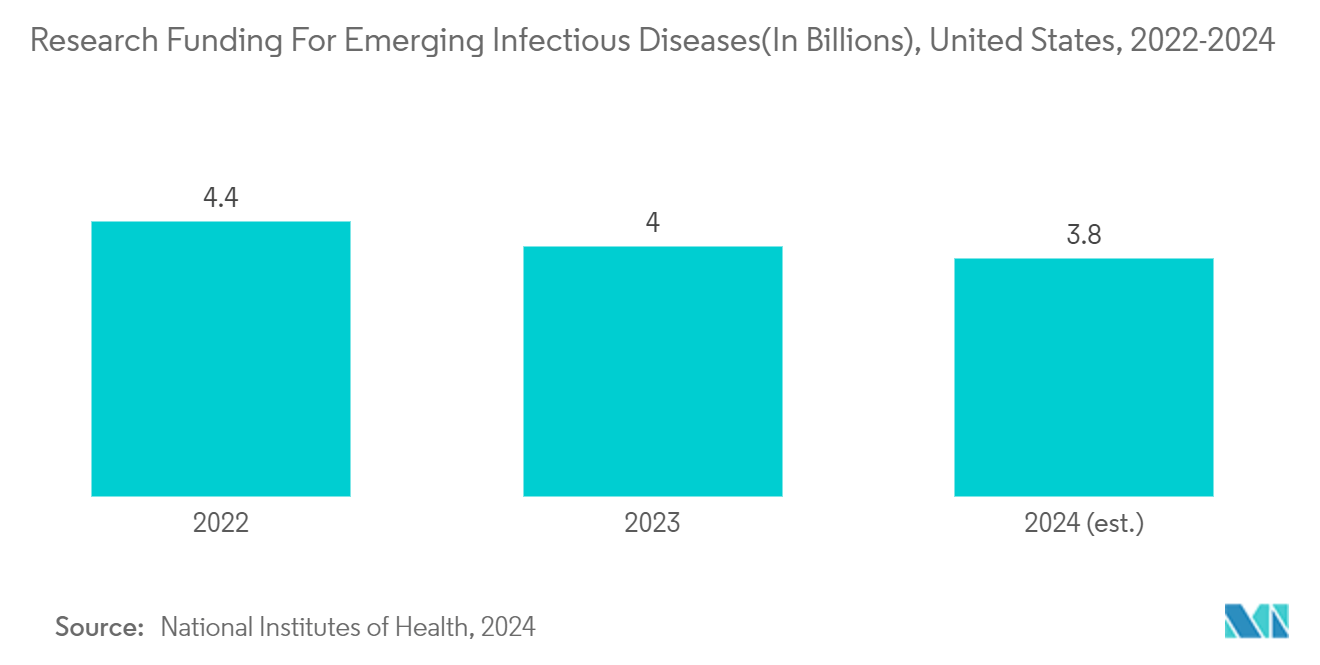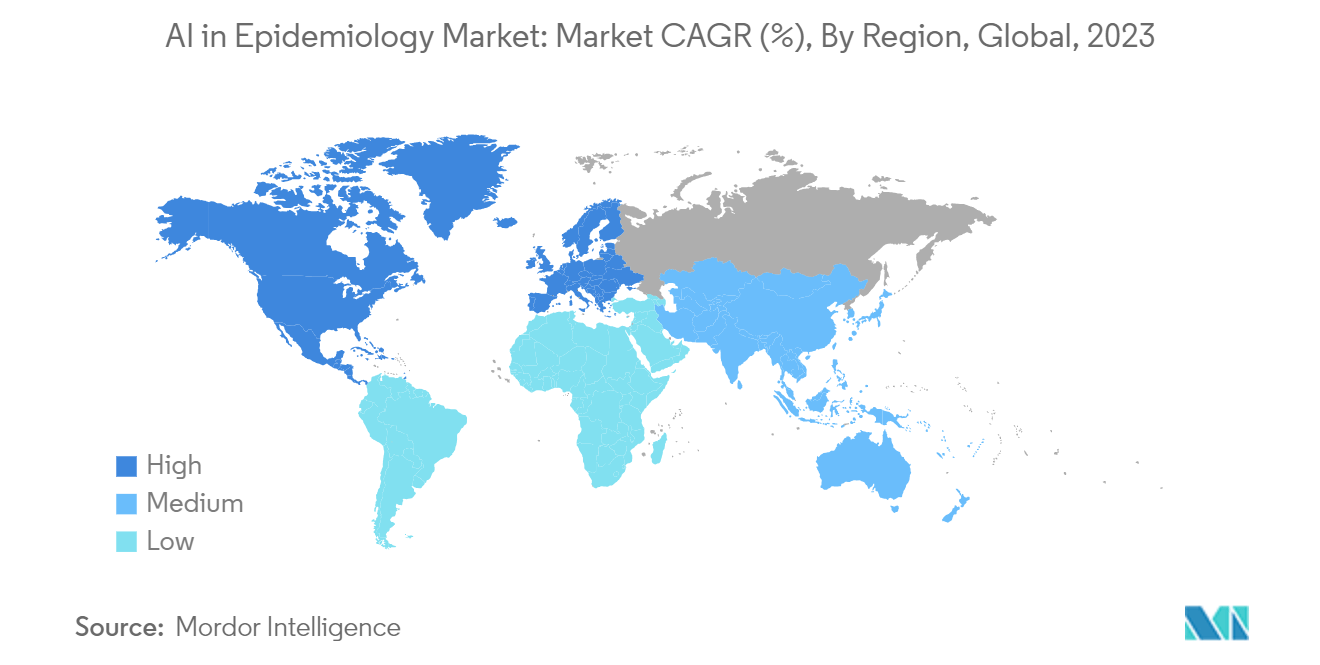Market Trends of AI In Epidemiology Industry
The Disease and Syndromic Surveillance Segment is Expected to Hold a Significant Market Share Over the Forecast Period
Disease surveillance data serves as the basis for the detection of potential outbreaks for an early warning system to prevent what could become public health emergencies. Syndromic surveillance focuses on the early symptom (prodrome) period before clinical or laboratory confirmation of a particular disease. In this surveillance, information about patients' symptoms (e.g., cough, fever, or shortness of breath) is collected during the early phases of illness.
The rising demand for the monitoring and management of infectious diseases accelerates the adoption of artificial intelligence technologies to effectively track infectious diseases and prevent pandemics, which is expected to drive the segment’s growth over the forecast period. For instance, according to an article published in the Lancet Infectious Disease Journal in September 2024, Africa reports more than 160 disease outbreaks annually. To tackle this outbreak's early stage, AI-driven machine learning can be deployed to identify patterns in epidemiological, genomic, human mobility, and environmental data to detect emerging diseases and enable timely public health responses. Hence, the increasing number of infectious disease outbreaks increases the demand for AI solutions for effective disease and symptom surveillance, which is expected to drive the segment’s growth over the forecast period.
Increasing research and development activities for the development of new AI tools for disease and symptom surveillance are expected to boost the segment’s growth. For instance, in January 2024, researchers at the University of California San Diego School of Medicine utilized an artificial intelligence (AI) model, entitled COMPOSER, to quickly track the patients at risk for sepsis infection. Hence, the development of such artificial intelligence algorithms is expected to increase the adoption of AI in monitoring various diseases.
Hence, the rising demand for the monitoring and management of infectious diseases and increasing research activities for the development of new artificial intelligence algorithms are expected to drive the segment’s growth during the forecast period.

North America is Expected to Hold a Significant Market Share Over the Forecast Period
North America holds a significant market share due to the rising prevalence of infectious diseases in the region, increasing research activities for developing AI technologies, and growing strategic activities such as acquisitions by key players.
The increasing prevalence of infectious diseases in North America increases the demand for advanced technologies, such as AI solutions, to identify and track these diseases at early stages and tackle them effectively. According to the Centers for Disease Control and Prevention's updated data from March 2024, around 8.3 thousand cases of tuberculosis were reported in the United States in 2022, and around 13 million people were living with latent TB infection. Hence, the increasing prevalence of infectious diseases in North America raises the demand for AI solutions for the effective management of diseases and decreases the burden on the healthcare system. This is expected to boost the market’s growth in the region during the forecast period.
The rise in strategic activities, such as the launch of new AI solutions in epidemiology, is also expected to drive the market’s growth over the forecast period. For instance, in August 2024, BlueDot Inc., a Candian provider of infectious disease surveillance solutions, reported the launch of BlueDot Assistant and Personalized Briefs to enable global organizations and governments to identify, anticipate, and respond to infectious disease threats on a local and global scale. BlueDot Assistant leverages Cohere and Open AI’s combined technology to provide a ChatGPT-like interface between users and BlueDot’s global health and novel datasets. Hence, the launch of technologies increases the accessibility of artificial solutions that can be used in epidemiology studies, which is expected to boost the market’s growth during the forecast period.
Therefore, the increasing prevalence of infectious diseases and rising strategic activities, such as the launch of AI solutions used in epidemiology studies, are expected to drive the market’s growth during the forecast period.


